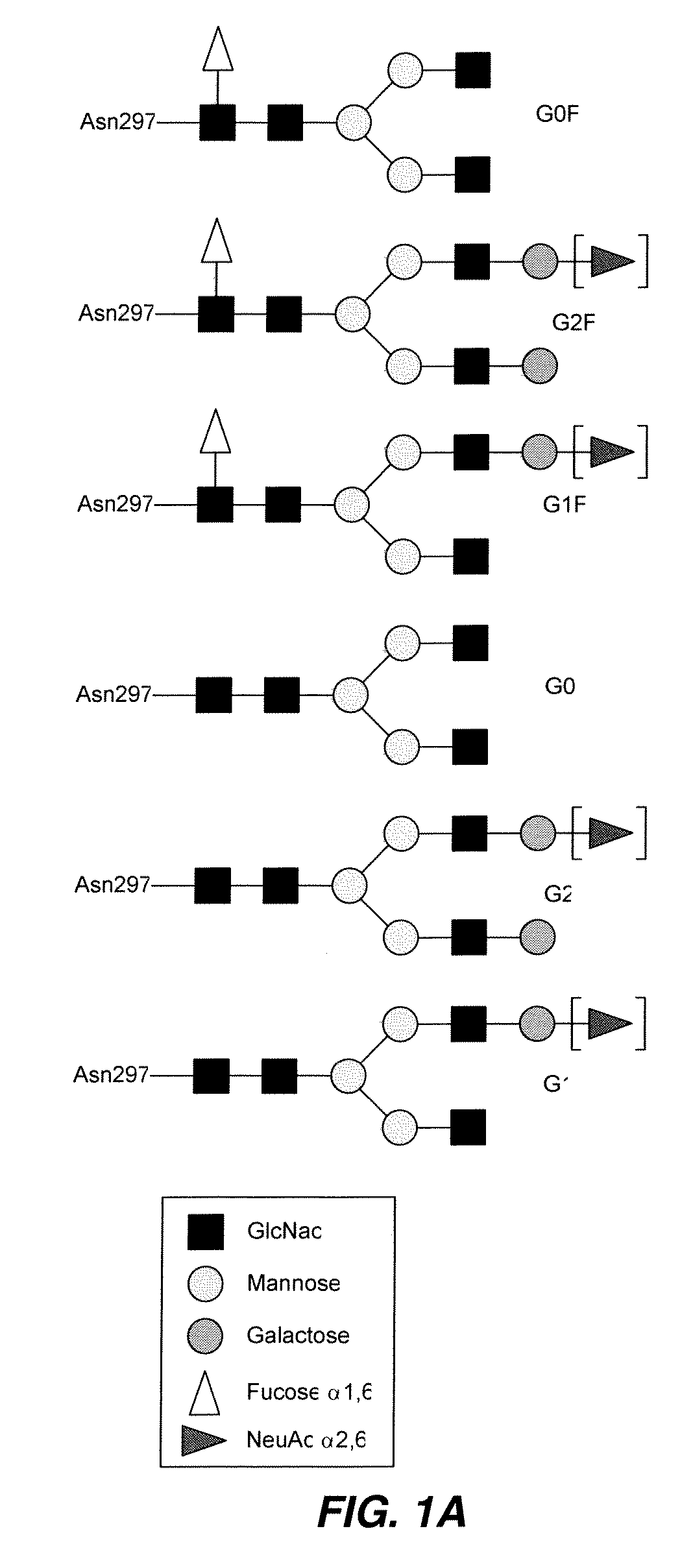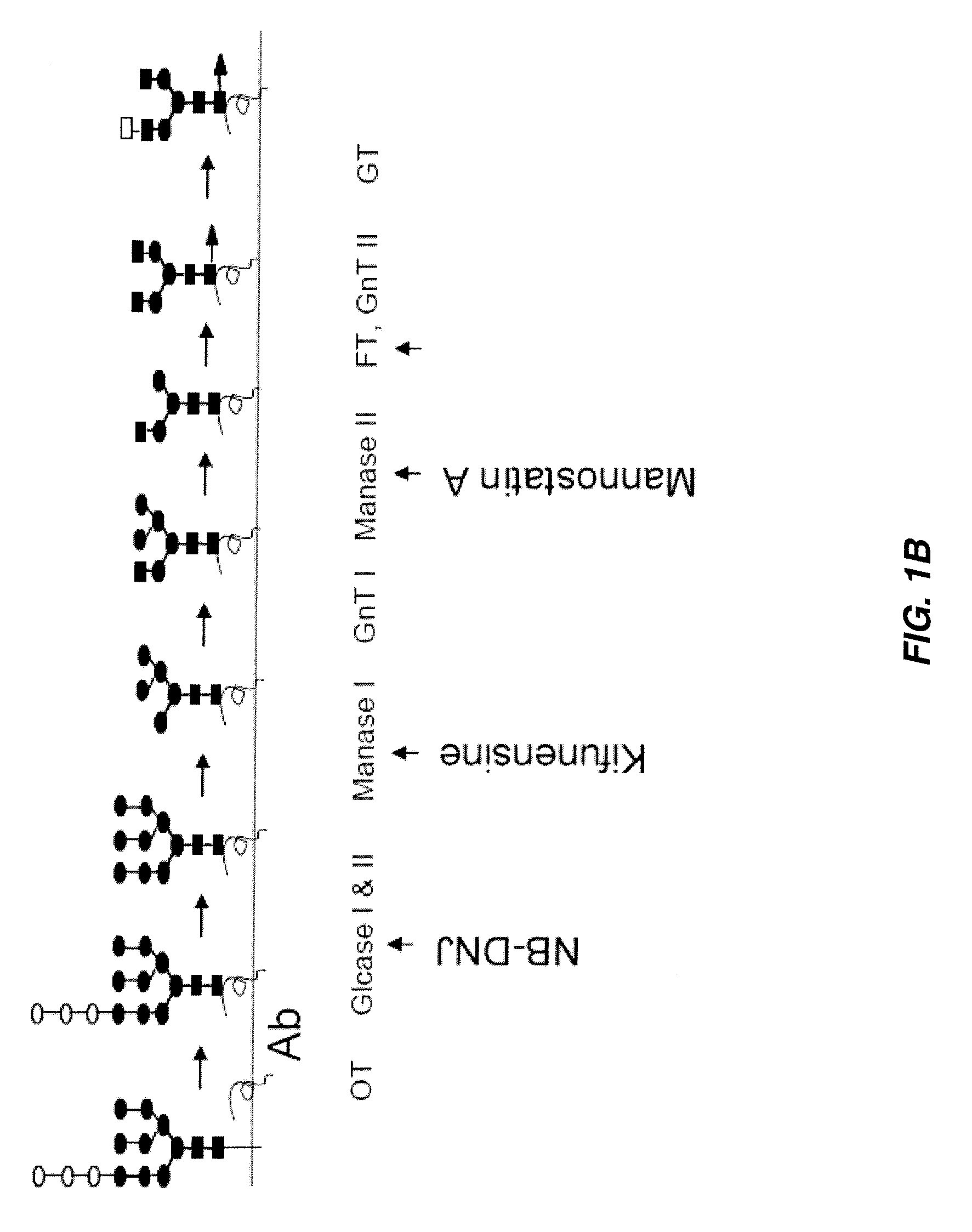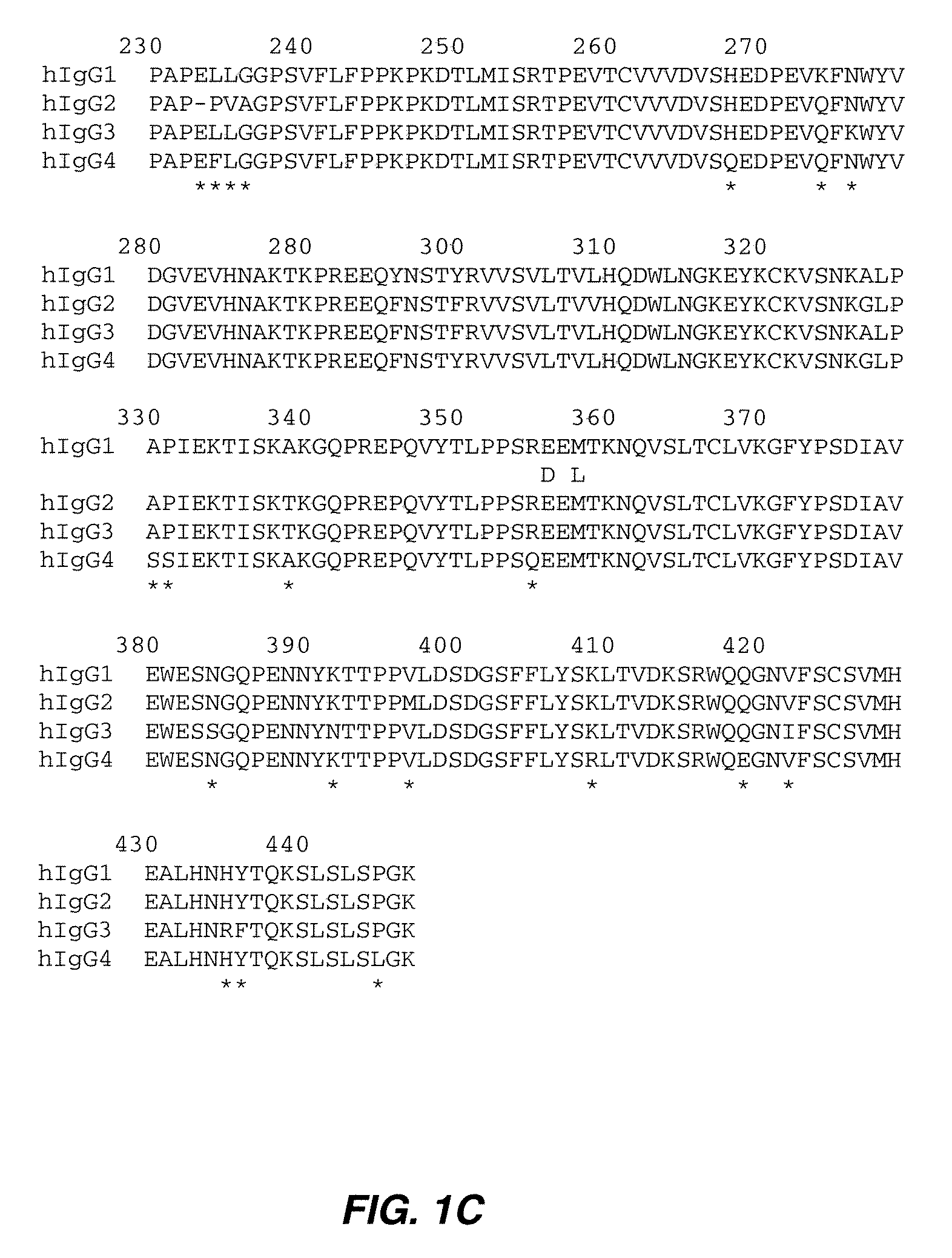Antibody-based therapeutics with enhanced ADCC activity
a technology of adcc activity and antibody, which is applied in the field of protein glycobiology, can solve the problems of immunogenicity, the effect of effector functions, and the pharmacokinetic properties of mouse antibodies, and achieve the effect of enhancing adcc activity
- Summary
- Abstract
- Description
- Claims
- Application Information
AI Technical Summary
Problems solved by technology
Method used
Image
Examples
example 1
Treatment of Cells and Purification of Antibodies
[0111]Hybridoma cells expressing TEM mAb A, an antibody against a tumor vascular associated antigen, were grown in medium containing 1% fetal bovine serum with low IgG (Invitrogen Corp.), 5 μg / ml bovine insulin, 5 μg / ml human transferrin, 0.01 mM ethanolamine and 25 nM sodium selenite. Cells were treated once with the following inhibitors: 20 μg / ml mannostatin A, and 0.5 mM NB-DNJ for 4 days; and twice with 2 μg / ml kifunensine at days 0 and 2; or cultured without inhibitors (“control”).
[0112]CHO cells expressing TEM mAb B, a different antibody against a tumor vascular associated antigen, were grown in CD-CHO media with 4 mM glutamine. Cells were cultured for three days, while being treated with 2 μg / ml kifunensine at days 0 and 2 or cultured without kifunensine (“control”). Antibodies in the media were purified using a Protein A Sepharose™ column. After loading the column, the column was washed extensively with 15 column volumes of PB...
example 2
Lectin Blotting
[0113]Antibody samples purified as described in Example 1 were resolved on a 4-20% SDS-PAGE and transferred to a PVDF membrane. The membrane was incubated one hour with biotinylated lentil lectin (a lectin specific for α-1,6 linked fucose) in 50 mM Tris buffer, pH 7.4, containing 0.5 M NaCl, 1 mM CaCl2, 1 mM MgCl2, 1% BSA and 0.5% Tween 20. Thereafter, the membrane was washed and incubated with streptavidin-HRP in the same buffer and then developed using a chemoluminescent reagent.
[0114]The results for TEM mAb A are shown in FIG. 2B. The results indicate that the antibody from cells treated with kifunensine contained significantly less N-glycans with α-1,6-linked fucosylated structures. (Similar results were observed for TEM mAb B samples.)
[0115]The same membrane was stripped using stripping buffer (Pierce), incubated with an anti-human Fab-HRP antibody and developed using a chemoluminescent reagent. The results (FIG. 2C) confirmed equal loading of the antibody sample...
example 3
MALDI-TOF Mass Spectrum Analysis of Oligosaccharides
[0116]N-linked glycans from antibodies purified as described in Example 1 were released with PNGase F. After filtration through 10 kDa filters, the filtrates were treated with Dowex AG-50 (H+), AG501, and C18 ziptip sequentially. Aliquots of samples were applied to a target, followed by sDHB matrix. The MALDI-TOF mass spectra were acquired using a Voyager-DE PRO Biospectrometry Workstation (Applied Biosystems, Foster City, Calif., USA) in the positive-ion and reflective mode.
[0117]The results from the analysis of TEM mAb A, as described in Example 1, are shown in FIG. 3 and Table 1.
[0118]
TABLE 1Theo-ObservedareticalaGroupsm / zm / zStructuresControl1485.98671485.5344(HexNAc)2(Deoxyhexose)1 +(peak 1)(Man)3(GlcNAc)2 G0F1648.10701647.5874(Hex)1(HexNAc)2(Deoxyhexose)1 +(peak 2)(Man)3(GlcNAc)2 G1FManno-1486.01171485.5344(HexNAc)2(Deoxyhexose)1 +statin(peak 1)(Man)3(GlcNAc)2 G0Ftreatment1648.13811647.5874(Hex)1(HexNAc)2(Deoxyhexose)1 +(peak ...
PUM
| Property | Measurement | Unit |
|---|---|---|
| cell density | aaaaa | aaaaa |
| cell density | aaaaa | aaaaa |
| concentrations | aaaaa | aaaaa |
Abstract
Description
Claims
Application Information
 Login to View More
Login to View More - R&D
- Intellectual Property
- Life Sciences
- Materials
- Tech Scout
- Unparalleled Data Quality
- Higher Quality Content
- 60% Fewer Hallucinations
Browse by: Latest US Patents, China's latest patents, Technical Efficacy Thesaurus, Application Domain, Technology Topic, Popular Technical Reports.
© 2025 PatSnap. All rights reserved.Legal|Privacy policy|Modern Slavery Act Transparency Statement|Sitemap|About US| Contact US: help@patsnap.com



